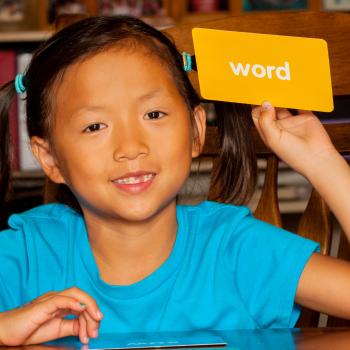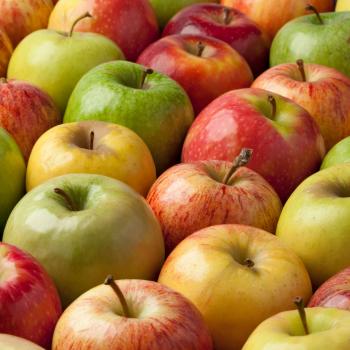Water is always moving in a continuous cycle from liquid to solid to gas and back again. Students study this never-ending cycle through shared readings, center activities, and experiments.

Rain, Ice, Steam: Using Reading to Support Inquiry About the Water Cycle

Grades
|
When I Was Young In...A Literature to Language Experience
6 - 8
Lesson Plan
| Unit
Past meets present in this lesson in which students practice verb tense when they write personal short stories that they then publish in a flip book.

Grades
|
Using Children's Literature to Develop Classroom Community
3 - 6
Lesson Plan
| Standard Lesson
Conversation and cooperation bring out the best in students when they hold dialogues about their individual strengths, abilities, and talents.

Grades
|
Lonely as a Cloud: Using Poetry to Understand Similes
4 - 8
Lesson Plan
| Standard Lesson
Students identify similes in poetry and gain experience in using similes as a poetic device in their own work.

Grades
|
Using Technology to Analyze and Illustrate Symbolism in Night
6 - 8
Lesson Plan
| Standard Lesson
Images have power—they can trigger memories or symbolize abstract ideas. Students put the power of images to the test as they analyze symbolism in Night and create symbolic photomontages.

Grades
|
Integrating Literacy Into the Study of the Earth's Surface
3 - 5
Lesson Plan
| Standard Lesson
Water covers 71% of the earth's surface—does it get the instructional time it deserves in your busy curriculum? Students wade right in to the study of bodies of water as they read and discuss science trade books and work together to develop Readers Theater scripts based on selected titles.

Grades
|
Shhh! Bear's Sleeping: Learning About Nonfiction and Fiction Using Read-Alouds
K - 2
Lesson Plan
| Standard Lesson
Students explore the distinction between the fiction story Bear Snores On and the nonfiction book Every Autumn Comes the Bear.

Grades
|
Descriptive Writing and the 100th Day of School
K - 2
Lesson Plan
| Standard Lesson
Students write descriptions of 100th day bottles they create at home, write clues about their bottles for a guessing game, practice descriptive writing, and create a class book.

Grades
|
Using Word Storms to Explore Vocabulary and Encourage Critical Thinking
3 - 5
Lesson Plan
| Recurring Lesson
Students learn that dogs are more than just pets in this lesson, which teaches them to use research and vocabulary-acquisition strategies to learn and write about working dogs.

Grades
|
Shared Poetry Reading: Teaching Print Concepts, Rhyme, and Vocabulary
K - 2
Lesson Plan
| Standard Lesson
The rhyme and reason behind this lesson is that students will need to develop important reading skills to increase their reading fluency.

Grades
|
Using the Check and Line Method to Enhance Reading Comprehension
6 - 8
Lesson Plan
| Minilesson
Do your students skim assigned text material without even engaging their brains? The Check and Line method encourages students to think about what they are reading and monitor their own comprehension of the information.

Grades
|
Whole-to-Parts Phonics Instruction: Teaching Letter-Sound Correspondences
K - 2
Lesson Plan
| Standard Lesson
Students will find that learning onset and rime is a handy skill when they read the Jack and Jill rhyme.

Grades
|
Cowboys and Castles: Interacting With Fractured Texas Tales
K - 2
Lesson Plan
| Standard Lesson
What do cowboy hats have to do with fairy tales? Two traditional fairy tales and their Texas-based counterparts set the stage for five different ways to respond to text.

Grades
|
Poetry Portfolios: Using Poetry to Teach Reading
K - 2
Lesson Plan
| Standard Lesson
Teach your students about sentence structure, rhyming words, sight words, vocabulary, and print concepts using a weekly poem.

Grades
|
QARs + Tables = Successful Comprehension of Math Word Problems
3 - 5
Lesson Plan
| Standard Lesson
Using census data for an example, students use the question-answer relationship (QAR) strategy to understand and solve word problems that refer to tables and other graphics.

Grades
|
Word Wizards: Students Making Words
K - 2
Lesson Plan
| Minilesson
The Word Wizard activities in this lesson transform phonics from drudgery into delight! Students manipulate letters to make different words.

Grades
|
Lights, Camera, Action: Interviewing a Book Character
6 - 8
Lesson Plan
| Unit
Students get the inside scoop on a story when they create interview questions and answers for characters in the books they read.

Grades
|
Building Reading Comprehension Through Think-Alouds
6 - 8
Lesson Plan
| Standard Lesson
Students learn components of think-alouds and type-of-text interactions through teacher modeling. In the process, students develop the ability to use think-alouds to aid in reading comprehension tasks.

Grades
|
A is for Apple: Building Letter-Recognition Fluency
K - 2
Lesson Plan
| Standard Lesson
Students apply and build their knowledge of letters and letter sounds as they play games and interact with letters online, creating their own ABC book as a final activity.

Grades
|
Using a Predictable Text to Teach High-Frequency Words
K - 2
Lesson Plan
| Standard Lesson
After reading an engaging yet predictable text about a child looking for his cat, students use a similar format and high-frequency words to craft tales about their own lost pets.